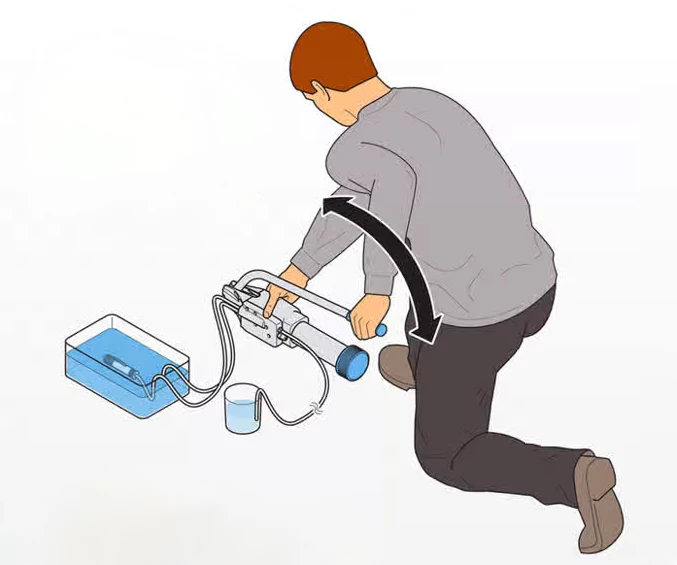It's ironic that even when surrounded by water, sailors who are lost at sea can still die of thirst. The QuenchSea 3.0 portable desalinator is designed to keep that from happening, and it requires no power source other than its user's arm muscles.
Currently the subject of a Kickstarter campaign, the QuenchSea 3.0 is made by British company Hydro Wind Energy. The firm debuted the original human-powered QuenchSea device back in 2020, followed by the smaller deep-sea-pressure-powered QuenchSea Reel in 2023.
On the original model, users arm-pumped a lever that forced seawater through a triple filtration system and a reverse osmosis membrane. The seawater was drawn in through one silicone tube that ran into the ocean, while the purified water was dispensed out of another tube that led to a bottle or other container.
This setup was said to remove salt, viruses, bacteria, microplastic particles and other contaminants from seawater at a claimed rate of over 2 liters (0.5 US gal) of water per hour on average, or up to 3 liters under ideal conditions. The resulting drinking water was claimed to meet World Health Organization (WHO) standards.

The 3.0 utilizes the same basic concept, but adds a pressure boosting mechanism and an energy recovery system. As a result, it's said to be easier to pump than the original and faster at desalination/filtration, reportedly putting out an impressive 6 to 8 liters (1.6 to 2 gal) of drinking water per hour.
QuenchSea promises that the purified water will contain less than 1,000 milligrams of total dissolved solids (TDS) per liter, a level that meets WHO standards. In fact, the device should typically bring seawater down to the neighborhood of 300 to 500 TDS, with the activated carbon in its filtration system removing off-putting tastes and odors.

It should be noted that both the reverse osmosis membrane and the filter cartridge will periodically need to be replaced. Depending on factors such as seawater salinity and temperature, one membrane should be good for about 300 liters (79 gal) of drinking water.
Assuming the QuenchSea 3.0 reaches production, a pledge of US$250 will get you one. Its planned retail price is $500. Membrane refills will go for $30 a pair, while filter cartridges will sell for $20 a pair.
The following video provides more information on how the device works.
Source: Kickstarter
Note: New Atlas may earn commission on purchases made through links.




